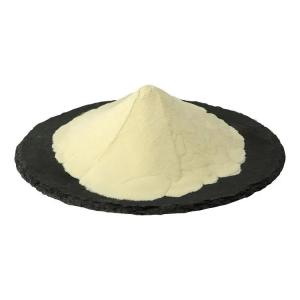News list
News Center
Hot Product
News
Phosphoric acid in food quality considerations
Time:2025-10-13
1. Introduction
Phosphoric acid (H₃PO₄) is a widely used inorganic acid in the food and beverage industry. It serves multiple purposes—from pH regulation and flavor enhancement to use as an acidity stabilizer in processed foods. Understanding its impact on food quality, processing, and product stability is essential for ensuring safe and consistent manufacturing outcomes.
2. Role in Food Formulation
Phosphoric acid functions as a key acidulant, helping to adjust and maintain the desired acidity level in foods. This pH control contributes to product stability and consistency during processing and storage. It is also used in carbonated beverages to provide a sharp, refreshing taste and to balance sweetness from added sugars or sweeteners.
3. Impact on Flavor and Texture
In food formulation, the acid’s contribution to sensory properties is significant. Phosphoric acid enhances the tangy or tart flavor profile in products such as soft drinks, sauces, and condiments. Additionally, by influencing the ionic balance, it can subtly affect the texture and mouthfeel of emulsified or gel-based foods.
4. Compatibility with Other Ingredients
Phosphoric acid interacts well with various food ingredients including sugars, flavoring agents, and stabilizers. Its compatibility allows for smooth integration into formulations without causing unwanted precipitation or phase separation. However, careful control of concentration is required to prevent corrosion in metal containers or degradation of sensitive components.
5. Quality and Purity Standards
Food-grade phosphoric acid must meet strict quality specifications to ensure safety and performance. It is typically required to have a high purity level with minimal heavy metal residues. Compliance with international standards such as FCC (Food Chemicals Codex) or E-number regulations (E338) ensures its suitability for food use.
6. Processing and Storage Stability
Phosphoric acid contributes to the long-term stability of processed foods by maintaining pH and preventing discoloration or off-flavors during storage. Its chemical stability under normal processing conditions makes it a reliable choice in high-temperature or extended-shelf-life applications.
7. Regulatory and Labeling Considerations
In most countries, phosphoric acid is approved as a food additive and labeled as E338. Manufacturers must ensure its use within the allowable concentration limits defined by local food safety authorities. Transparent labeling helps consumers make informed choices and maintains trust in product safety.
8. Conclusion
Phosphoric acid plays a crucial role in ensuring food quality, stability, and sensory balance. When applied under proper regulatory and formulation guidelines, it supports consistent production outcomes and enhances the overall consumer experience without compromising safety or quality.
Phosphoric acid (H₃PO₄) is a widely used inorganic acid in the food and beverage industry. It serves multiple purposes—from pH regulation and flavor enhancement to use as an acidity stabilizer in processed foods. Understanding its impact on food quality, processing, and product stability is essential for ensuring safe and consistent manufacturing outcomes.
2. Role in Food Formulation
Phosphoric acid functions as a key acidulant, helping to adjust and maintain the desired acidity level in foods. This pH control contributes to product stability and consistency during processing and storage. It is also used in carbonated beverages to provide a sharp, refreshing taste and to balance sweetness from added sugars or sweeteners.
3. Impact on Flavor and Texture
In food formulation, the acid’s contribution to sensory properties is significant. Phosphoric acid enhances the tangy or tart flavor profile in products such as soft drinks, sauces, and condiments. Additionally, by influencing the ionic balance, it can subtly affect the texture and mouthfeel of emulsified or gel-based foods.
4. Compatibility with Other Ingredients
Phosphoric acid interacts well with various food ingredients including sugars, flavoring agents, and stabilizers. Its compatibility allows for smooth integration into formulations without causing unwanted precipitation or phase separation. However, careful control of concentration is required to prevent corrosion in metal containers or degradation of sensitive components.
5. Quality and Purity Standards
Food-grade phosphoric acid must meet strict quality specifications to ensure safety and performance. It is typically required to have a high purity level with minimal heavy metal residues. Compliance with international standards such as FCC (Food Chemicals Codex) or E-number regulations (E338) ensures its suitability for food use.
6. Processing and Storage Stability
Phosphoric acid contributes to the long-term stability of processed foods by maintaining pH and preventing discoloration or off-flavors during storage. Its chemical stability under normal processing conditions makes it a reliable choice in high-temperature or extended-shelf-life applications.
7. Regulatory and Labeling Considerations
In most countries, phosphoric acid is approved as a food additive and labeled as E338. Manufacturers must ensure its use within the allowable concentration limits defined by local food safety authorities. Transparent labeling helps consumers make informed choices and maintains trust in product safety.
8. Conclusion
Phosphoric acid plays a crucial role in ensuring food quality, stability, and sensory balance. When applied under proper regulatory and formulation guidelines, it supports consistent production outcomes and enhances the overall consumer experience without compromising safety or quality.


 CN
CN





